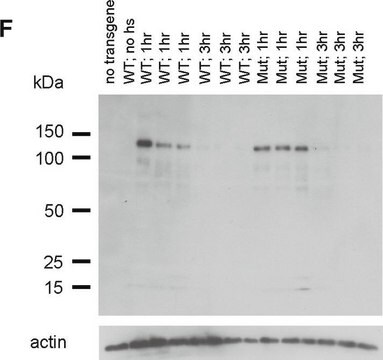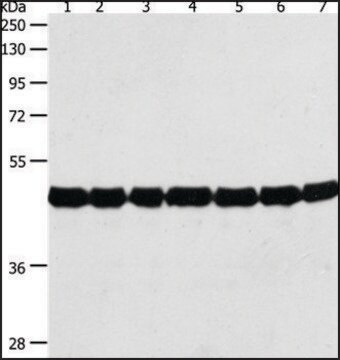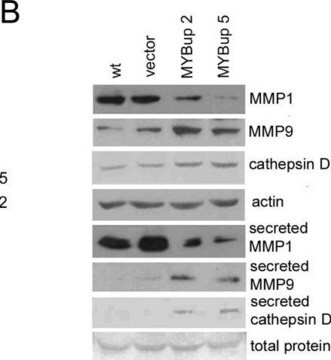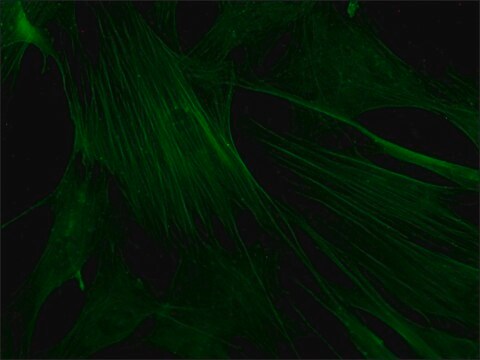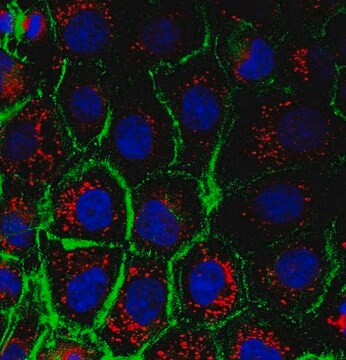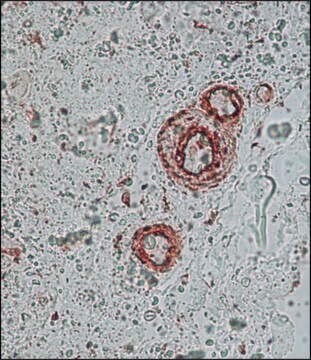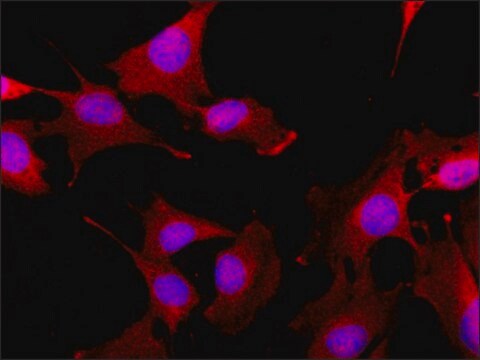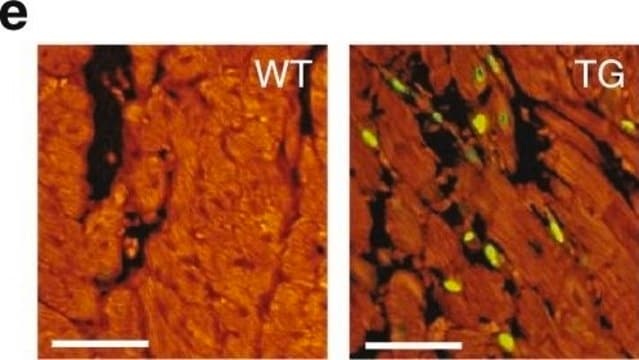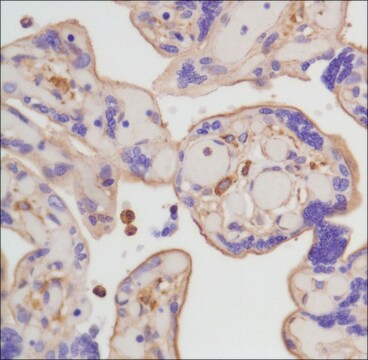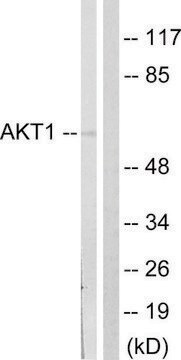A2103
Anti-Actin, N-terminal antibody produced in rabbit

~0.5 mg/mL, affinity isolated antibody, buffered aqueous solution
Sinonimo/i:
Actin Detection Antibody, Rabbit Anti-Actin
About This Item
Prodotti consigliati
Origine biologica
rabbit
Livello qualitativo
Coniugato
unconjugated
Forma dell’anticorpo
affinity isolated antibody
Tipo di anticorpo
primary antibodies
Clone
polyclonal
Forma fisica
buffered aqueous solution
PM
antigen 42 kDa
Reattività contro le specie
frog, rat, mouse, chicken, human
Confezionamento
antibody small pack of 25 μL
Convalida avanzata
independent
Learn more about Antibody Enhanced Validation
Concentrazione
~0.5 mg/mL
tecniche
immunocytochemistry: 1-2 μg/mL using cultured chicken fibroblasts
immunohistochemistry (formalin-fixed, paraffin-embedded sections): 2-4 μg/mL using sections of human appendix, mouse heart, and frog skeletal muscle
indirect immunofluorescence: suitable
western blot: 0.5-1 μg/mL using whole extract of the human epitheloid carcinoma HeLa cell line.
western blot: 2-4 ng/mL using whole extract of rat skeletal muscle
N° accesso UniProt
Condizioni di spedizione
wet ice
Temperatura di conservazione
−20°C
modifica post-traduzionali bersaglio
unmodified
Informazioni sul gene
human ... ACTA1(58) , ACTA2(59) , ACTB(60) , ACTC1(70) , ACTG1(71) , ACTG2(72)
mouse ... Acta1(11459) , Acta2(11475) , Actb(11461) , Actc1(11464) , Actg1(11465) , Actg2(11468)
rat ... Acta1(29437) , Acta2(81633) , Actb(81822) , Actc1(29275) , Actg1(287876) , Actg2(25365)
Descrizione generale
Immunogeno
Applicazioni
- immunoblotting
- quantitative chromatin immunoprecipitation (qChIP)
Azioni biochim/fisiol
Stato fisico
Altre note
Esclusione di responsabilità
Non trovi il prodotto giusto?
Prova il nostro Motore di ricerca dei prodotti.
Raccomandato
Codice della classe di stoccaggio
12 - Non Combustible Liquids
Classe di pericolosità dell'acqua (WGK)
WGK 2
Dispositivi di protezione individuale
Eyeshields, Gloves, multi-purpose combination respirator cartridge (US)
Certificati d'analisi (COA)
Cerca il Certificati d'analisi (COA) digitando il numero di lotto/batch corrispondente. I numeri di lotto o di batch sono stampati sull'etichetta dei prodotti dopo la parola ‘Lotto’ o ‘Batch’.
Possiedi già questo prodotto?
I documenti relativi ai prodotti acquistati recentemente sono disponibili nell’Archivio dei documenti.
I clienti hanno visto anche
Il team dei nostri ricercatori vanta grande esperienza in tutte le aree della ricerca quali Life Science, scienza dei materiali, sintesi chimica, cromatografia, discipline analitiche, ecc..
Contatta l'Assistenza Tecnica.

